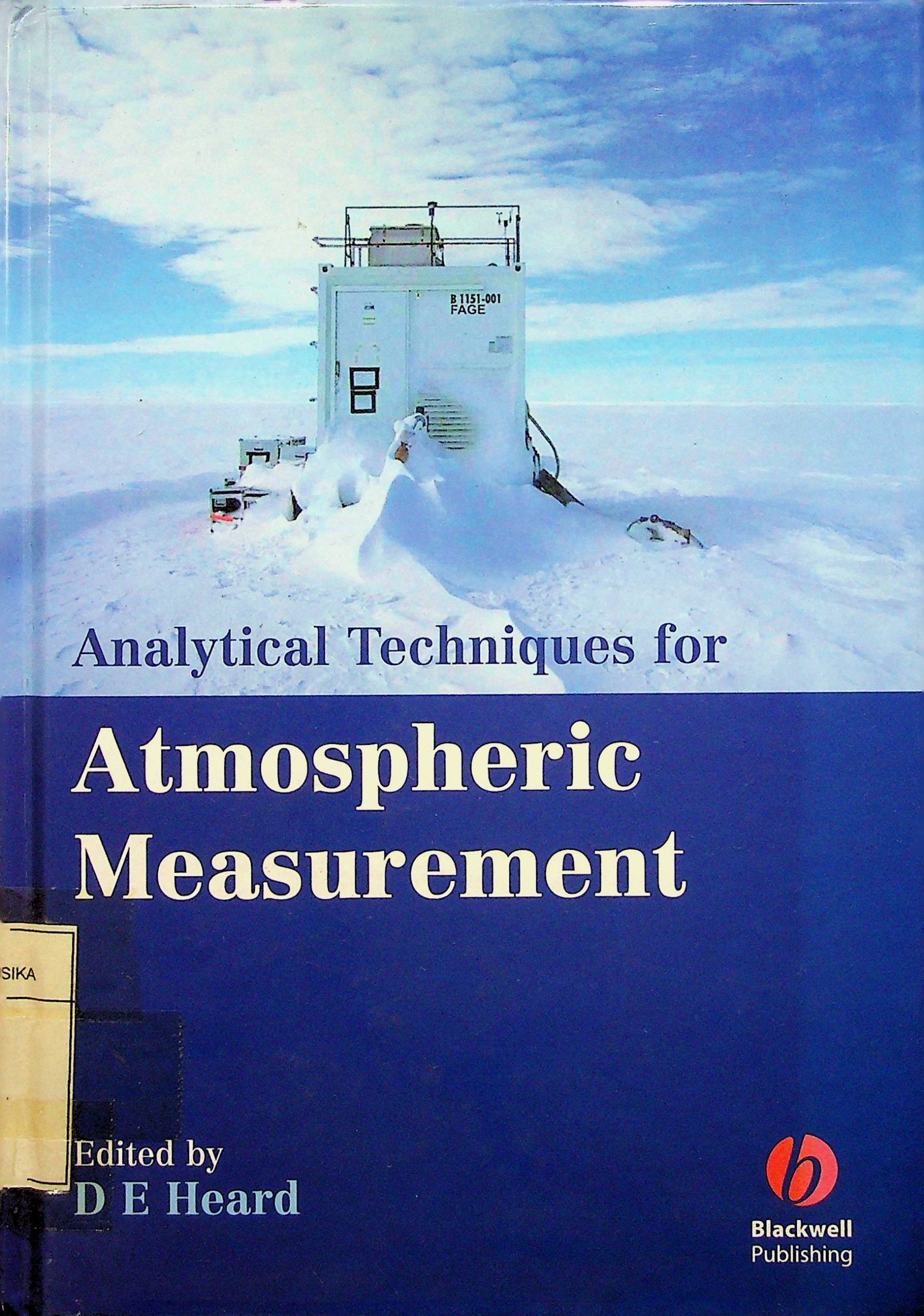In almost all of the scientific journals where data from field measurements are presented, it is the results, and how they have advanced our understanding of our complex workings of the atmosphere, that have received the most attention. We must not forget, however, that the instruments making the measurements are themselves state-of-the-art and highly specialised, having been first developed in the laboratory by chemists, physicists or engineers,before being applied to the measurement of atmospheric composition. There is usually insufficient space in the journal articles for a thorough description of the instrument, and often only essential details are given. Although there are a number of journals that specialise in the description of instruments, for example Review of Scientific Instruments, there is no common theme to a given issue, and an instrument to measure an important atmospheric constituent will likely be sandwiched between articles covering instruments from unrelated fields. Published proceedings from conferences or symposia devoted to instrumentation do offer some coherence, but the articles tend to be specialised, and although appealing to the highly expert reader, they are, in the main, not accessible to scientists wishing to further their knowledge in a new area. There are a number of textbooks that contain sections on instruments for measurements of atmospheric composition, but these usually do not cover recent developments, nor do they give a broad or detailed coverage of the techniques involved. New analytical techniques or detectors are often invented by researchers with little or no interest in atmospheric science and are then ‘discovered’ by the atmospheric field measurement community, who go on to utilise the method to make significant breakthroughs. More recently, there has been a stronger collaboration between atmospheric chemists, physicists, engineers and analytical scientists, to develop bespoke instruments with the sole intention of measuring new species in the atmosphere. Sometimes a scientist in a core discipline, for example a physical chemist, recognises the need for a particular measurement in the atmosphere, and realises that the techniques they have used in the laboratory^ for fundamental studies can equally be applied in the field. Once a rarity, this practice is now becoming more common.
5
Analytical Techniques for Atmospheric Measurement
Dwayne E. Heard University of Leeds
Penerbit :
Blackwell Publishing Ltd
Tahun :
2007
Buku Text
Atmospheric
-
No Scan113
-
No Klasifikasi551.51'1
-
ISBN978-1-4051-2357-0
-
ISSN-
-
No Registrasi69A/IV/2012
-
Lokasi TerbitInggris
-
Jumlah Hal93
-
Label551.51'1 Hea a
-
Versi DigitalYA
-
Versi FisikYA
-
Lokasi Rak Buku Fisik01/A/01
-
Jumlah Exemplar Fisik Tersedia1





